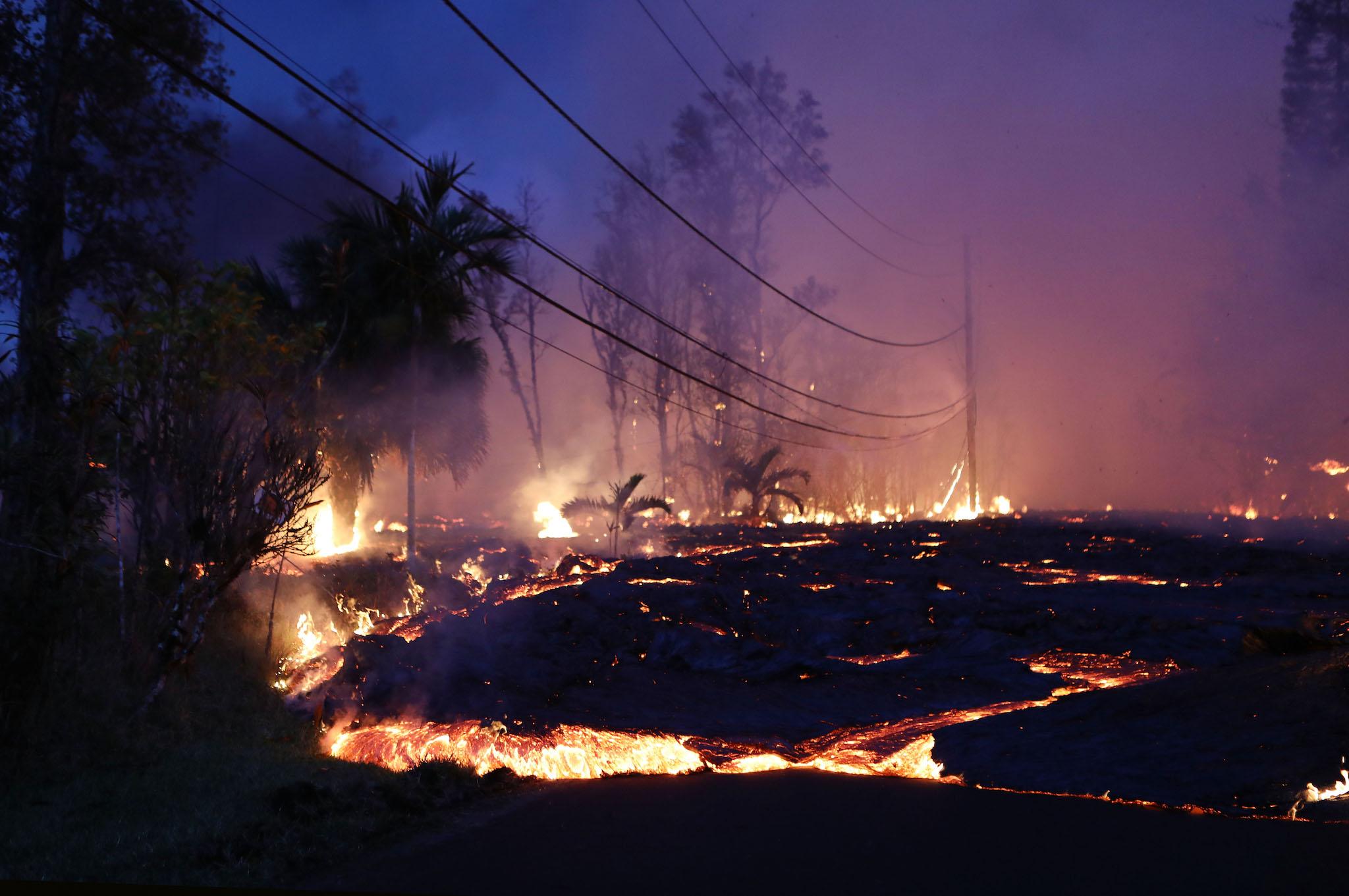Hawaii volcano eruption latest: Locals fear geothermal power station well could explode after being covered in lava
Lava has never engulfed a geothermal plant anywhere in the world before and potential threat is untested
Your support helps us to tell the story
From reproductive rights to climate change to Big Tech, The Independent is on the ground when the story is developing. Whether it's investigating the financials of Elon Musk's pro-Trump PAC or producing our latest documentary, 'The A Word', which shines a light on the American women fighting for reproductive rights, we know how important it is to parse out the facts from the messaging.
At such a critical moment in US history, we need reporters on the ground. Your donation allows us to keep sending journalists to speak to both sides of the story.
The Independent is trusted by Americans across the entire political spectrum. And unlike many other quality news outlets, we choose not to lock Americans out of our reporting and analysis with paywalls. We believe quality journalism should be available to everyone, paid for by those who can afford it.
Your support makes all the difference.A potentially explosive well at a geothermal power station on Hawaii has been covered by lava from the erupting Kilauea volcano after it flowed onto the site.
Locals fear an explosion of deadly hydrogen sulphide and other gasses should the well be ruptured.
Lava has never engulfed a geothermal power plant anywhere in the world and the potential threat is untested, according to the head of the state’s emergency management agency.
However, both the covered well and another which is threatened by flowing lava “are stable and secure,” Hawaii’s Civil Defence Agency said.
David Ige, the governor of Hawaii, said the geothermal plant was “sufficiently safe” from the lava, which has burned dozens of homes.
The molten rock was expected to continue to flow across the Puna Geothermal Venture (PGV) facility, according to the US Geological Survey.
Authorities shut down the plant after Kilauea began a once-in-a-century scale eruption on 3 May.
They removed 60,000 gallons of flammable liquid and deactivated wells which tap into steam and gas deep in the Earth’s core.
Magma from Kilaueau’s summit lava lake has drained and flowed around 25 miles (40km) east of the volcano, bursting out of the ground through about two dozen giant cracks or fissures near the plant.

The Israeli-owned 38 megawatt plant typically provides around 25 per cent of electricity on the Big Island, according to local power utility Hawaii Electric Light.
Last week, Operator Ormat Technologies Inc said there was no above-ground damage to the plant, but it would have to wait until the situation stabilised to assess the impact of earthquakes and subterranean lava flows on the wells.
Over the weekend, there were more than 250 earthquakes at Kilauea’s summit, with four explosions on Saturday sending ash as high as 12,000-15,000 feet, officials said.
US Marine Corps and National Guard helicopters are on standby for an air evacuation if fissure activity cuts off Highway 130, the last exit route for up to 1,000 coastal residents.
More residents in some sections of the Leilani Estates neighbourhood were ordered to immediately evacuate shortly before 8pm on Sunday “due to a fast moving lava flow from Fissure 7”, a statement from the civil defence agency said.

Authorities have also warned the volcano is now spewing out vog, or volcanoc smog.
It is created when vapour, carbon dioxide and sulphur dioxide from Kilauea mix together.
The grey haze can cause coughing, sore throats, headaches and other symptoms in generally healthy people, and it can be even more problematic for those with respiratory problems.
Additional reporting by agencies

Join our commenting forum
Join thought-provoking conversations, follow other Independent readers and see their replies
Comments